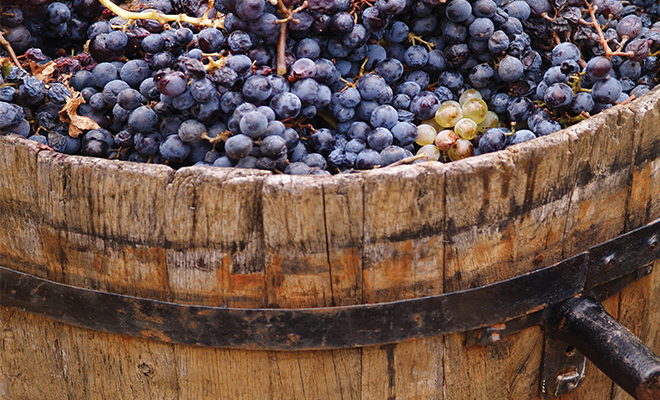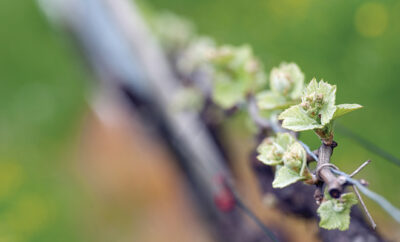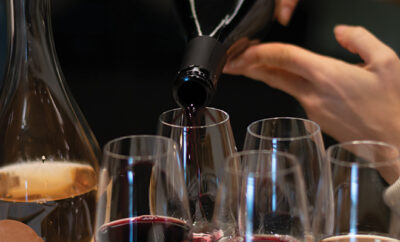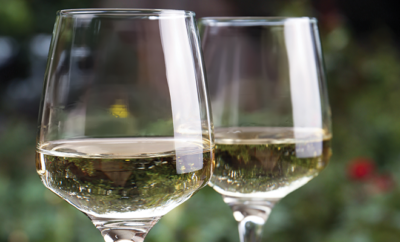
From Vineyard to Glass: The Harvest
Each grape varietal has its own ideal time to be separated from the vines and into the harvesters. Many wineries will hold Blessing of the Grapes, when community members, wine lovers and winegrowers come together to wish a safe and fulfilling harvest for wine harvest workers.
Patience. Anticipation. Planning. Welcome to Harvest!
This is the time of year that many farmers and growers plan for, whether it’s apples, eggplant, squash, leeks or pumpkins. These delicious harvest season items can signal big changes in weather, and the wine harvest isn’t any different. Prior to wine harvest, it’s fun to watch the grapevines changing color both in the tips of the leaves and base of the stems as the fruit fulfills its wine destiny. If you’ve visited a winery during harvest season, you sense the combined energy of excitement and fatigue from doing what one loves—making wine.
Every bottle of wine in your wine closet or favorite wine bar started with a humble, naked beginning. The grapes were harvested, sorted, selected, processed and fermented before they were sent to barrel or bottle. So for me, that glass of wine has a destiny of sorts, culminating with the harvest season of any particular year, typically running late September into early November.
Prior to Harvest
As the winegrower scans the vineyard, each row matters equally. July through September, the winegrower may thin the Cabernet Sauvignon vines, creating more opportunities for the grape clusters to benefit from watering, wind and other weather elements unique to the vineyard. Not every row may need this specific care, however, because every row has a unique place in that vineyard. One row of grape clusters may be farther or closer to the busy road, exposed to more trauma, or perhaps the rows in the middle of the vineyard receive the most moisture-dense evening breezes, where thinning the grape clusters may actually harm the delicate fruit. This is where the term American Viticulture Area, or AVA, comes in, denoting a wine growing region’s unique geographical features, including the slope of hills, natural water resources and weather patterns within a specific boundary. A winemaker may choose to select fruit from a single AVA or blend from a variety of winegrowing regions. As experts in viticulture, winegrowers watch this pruning and selection process very carefully by row and by vine until harvest.
Are We There Yet?
When to harvest can be a key decision for the winegrower, one that could determine the values of the grapes, the vintage and resulting wine. Waiting for the perfect day or night to begin can be tricky, and luck is certainly one of the ingredients of a successful harvest. Studying weather forecasts, Farmer’s Almanac and one’s own experience and intuition affect a successful harvest.
Each grape varietal has its own ideal time to be separated from the vines and into the harvesters. Many wineries will hold Blessing of the Grapes, when community members, wine lovers and winegrowers come together to wish a safe and fulfilling harvest for wine harvest workers. This celebration, held throughout the world’s wine regions, marks the official harvest, which may last weeks, depending on the size of the vineyard and how many grape varietals the winegrower is managing. For many harvest workers, the days are 25 hours long.
Now the labor of wine-love is just getting started. If the winegrower is also the winemaker, the grapes receive the best handholding experience to blossom into exquisite handmade wines. After the grapes are selected and hand sorted, their destiny continues with processing into wine, which may include crushing, pressing or allowing the grapes to naturally drain into containers below.
Wine Soup
If you’ve ever put together a hearty stew or soup, you may be fascinated that the large vat of grapes resembles a very large, hearty stew filled with intense aromas of wet earth, fruit, deep berry or even evergreen and eucalyptus—all natural wine “spices” fermenting together to create a beautiful wine. The fruit may be semi-whole or macerated at this point. The organic yeasts in ripe fruit will now interact with fruit sugars to create the alcohol in the wine juice. Monitoring the balance of this perfection includes a constant measurement of natural sugars, yeasts, acid levels and how the wine’s journey “feels” to the winemaker. Sorting the grapes prior to this process was key; grape selection remains a highly impactful aspect of wine harvest. As the winemaker determines, the wine soup is placed into maturation tanks of plastic, metal, cement, or oak; there it continues to age until the winemaker feels it’s time to move it to smaller barrels or bottles for additional aging. The magic continues.
Grape to Glass
After harvest, the grapevines will rest a bit, returning nutrients to the vineyard. It could be three years or more from the 2014 harvest before you see that Cabernet Sauvignon grape on the shelf for purchase. Some winemakers will say the 2014 vintage contains unique flavor markers due to continued low rainfall, increased heat and changing soils. Time will tell. From the time that grape cluster is selected to the time the bottle is filled, aged, shipped, then sold, that little grape with the weathered skin has traveled a few roads to your wine glass to be enjoyed, savored and celebrated.
Sources: iwineinstitute.com, farmersalmanac.com







